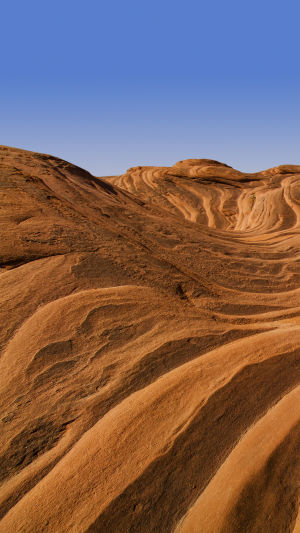The red layer rocks consist of red conglomerates, sand conglomerates, sandstones, siltstones, sandy shales, and muddy pages interacting with each other and can be more than 1000 meters thick.
The filler between the grains is iron oxide, which is why it appears red.
After weathering or washing by water, the sandstones become either flat-topped highlands or isolated rock peaks and pillars, which are spectacular.
Sandstone is a matte stone that does not produce light pollution caused by light reflection and is a natural anti-slip material.
Red sandstone is a sedimentary type of rock that is red, dark red or brown due to the abundance of oxides, and this type of rock is collectively called red sandstone.
Relying on the local natural, magical, and wonderful ancient geological volcanic eruption condensation and the formation of the unique red sandstone, identified by experts without any radioactive elements, is a standard environmental protection product.
It can produce various specifications of mushroom stone, mushroom slab, cultural stone, roadside stone, stepping stone, floor stone, and other stones.
Red sandstone characteristics.
Red sandstone is a sedimentary rock, formed by quartz particles (sand), stable structure, usually light brown or red, mainly containing silica, calcium, clay, and iron oxide, of which the content of the grains in the sand is more than 50%.
It is mainly in two typical structural forms: granular clastic structure and mud-like colluvial structure.
Red sandstone functional role.
Red sandstone has the function of being moisture-proof and also has the function of absorbing noise, which is worthy of being the first choice of new decorative materials today.
Nowadays, it is not only used in construction but also plays a pivotal role in decoration.
For example, it is widely used in decorative materials, craft decorations, garden sculptures, architectural components, fountain sculptures, and relief murals.
Classification of red sandstone.
Red sandstone classification red sandstone is divided into three types according to strength and disintegration characteristics as follows.
(1) A class of red sandstone, rock with natural uniaxial compressive strength of less than 15Mpa, dried at 105 ℃ temperature after immersion in water within 24 hours, showing slag, mud, or granular disintegration.
(2) Class II red sandstone, rock with natural uniaxial compressive strength of less than 15Mpa or slightly greater than 15Mpa, at 105 ℃ temperature after drying in water within 24 hours, is block disintegration.
(3) Class III red sandstone, the natural uniaxial compressive strength of the rock mass is greater than 15Mpa, and the non-disintegration characteristics are no different from those of ordinary sandstone.





